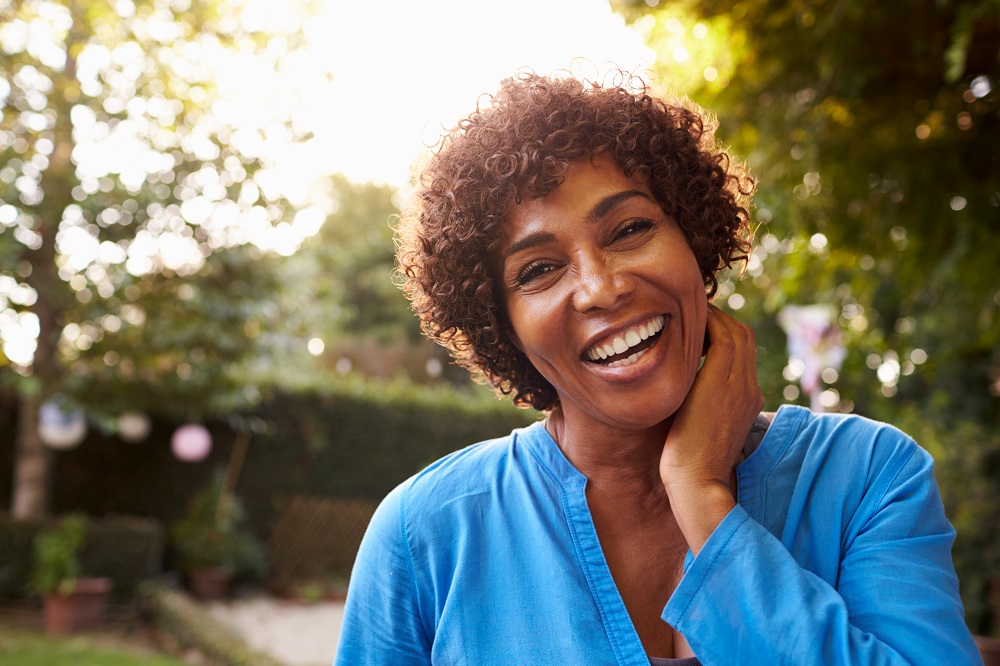As you progress through life, your skin goes through many different changes, both internally as well as externally. In order to maintain a healthy, vibrant complexion at every age, here are the skin changes that you need to be aware of, as well as steps you can take to cater to your skin’s evolving needs.

In Your 20s
For many people, their 20’s is a time when their skin will seem to be at its best, and it can be difficult to imagine this ever changing.
However, your 20’s is actually when your skin’s natural production levels of collagen and elastin begin to decline…
Usually, this will be in your mid 20’s, but this does vary greatly between individuals.
Wondering what collagen and elastin actually are?
They are both proteins that make up an important part of your skin’s structure. Collagen and elastin are what give your skin its firmness, smoothness and tightness, and while your body does produce these itself, the rate at which it does so slows down with age.
Your skin will likely also experience a fair bit of environmental damage in your 20’s.
Why?
Because this is the decade when many experiment with bad lifestyle choices, from smoking and drinking to sun exposure and a lack of sleep.
All of these lifestyle factors really take their toll on your skin, even though you may not be visibly seeing the results of this quite yet.
Nevertheless, you can still take steps to protect your skin from all of this long-term damage.
The most important thing that you need to be doing is wearing sunscreen each and every day.
The sun’s UV rays are responsible for up to 80% of facial aging, which consists of everything from fine lines and wrinkles to dark spots and loose skin. This means that protecting your skin from the sun from now can really help to prevent a large amount of the facial aging that you would have otherwise been facing.
Make sure that your sunscreen is a broad spectrum one, and contains an SPF of at least 30.
In addition to sun protection, you also need to protect your skin from the additional environmental factors mentioned above.
The best way to do this is with antioxidants, which will be explained in more detail below.
Other than sunscreen and antioxidants, the best thing that you can do for your skin in your 20’s is establish a regular skin care routine, as this is a habit that will help to support your skin for the rest of your life.
Your skin care routine should consist of:
- Cleanser – this is essential and should be done at the end of each day
- Toner – this is an optional step, but could be useful if you have a problematic skin type
- Eye Cream – this is helpful, but not vital, in your 20’s
- Serum – this is one of the best ways to give your skin antioxidants
- Moisturizer – another essential step, and one that you should be doing twice a day
Tackling the basics of skin care from now will really help you to be fully aware of the changes your skin will go through as you age.
In Your 30s

Your collagen and elastin levels fall even more in your 30’s, as does your cell turnover rate, which is the rate at which your skin produces new skin cells to replace the older ones.
This, coupled with the sun damage you have experienced in your first two decades, can mean that your 30’s is when you are likely to begin noticing your very first fine lines.
These are likely to start appearing around the eyes first.
Why?
Because the skin around your eyes is far thinner than the skin on the rest of your face, making it much more susceptible to damage.
This makes an eye serum and cream so much more important now…
One that has been formulated with antioxidants would be especially beneficial.
Speaking of antioxidants…
If you haven’t already been using them in your skin care routine, now is the time to start.
Why are antioxidants so important?
Because when your skin comes into contact with everything from the sun to pollutants, free radicals are created in your skin. Free radicals end up damaging your skin cells, and creating more free radicals, which means that the damage keeps accumulating and becoming more serious.
Free radicals are behind a significant part of the aging process, and the best way to prevent them from causing all of this damage is with antioxidants.
Wondering which antioxidants you need to be using?
Try some of the following:
- Vitamin A – there are many forms of vitamin A available, which will be discussed in more detail below
- Vitamin C – another potent anti-aging ingredient that can do everything from brighten the complexion to boost collagen production
- Vitamin E – known for its powerful healing properties, while also boosting collagen and elastin production
- Green Tea – has a significant effect on fine lines and wrinkles, while also protecting against sun damage
- Resveratrol – protects against UV damage
In Your 40s

Now that you are in your 40’s, your collagen and elastin levels will really start becoming depleted, meaning that the fine lines you noticed in your 30’s will begin turning into wrinkles.
Another common issue experienced in the 40’s is hyperpigmentation, also referred to as dark spots or age spots.
Wondering what this is?
Well, everybody’s skin produces melanin – this is the pigment that gives your skin its color. However, when your skin is exposed to the sun, it produces more melanin, as this is its way of protecting itself from UV damage, and is the reason behind a sun tan.
As this continues, the skin will often end up producing too much melanin, which then gathers in small clusters in different parts of the skin, resulting in those areas appearing a darker color.
What can you do about hyperpigmentation?
Well, sun protection is key, but you should also try to speed up your cell turnover rate, as this is something else that will significantly decline as you progress through your 40’s.
The best way to do this is by exfoliation, with chemical exfoliation often bringing about quicker results than physical exfoliation.
Not only will this help to boost your cell turnover rate, but it will also clear away the dry and dead skin cells on the surface of your skin, which can lead to the dull and rough complexion that many tend to experience at this stage in life.
Another ingredient that you really need to be using in your 40’s, if you haven’t already started doing so, is retinol.
Why is retinol so important?
This is the only anti-aging ingredient that has been clinically proven to have a visible effect on the signs of aging.
It does this by working in a few different ways, including:
- Stimulating the production of new skin cells
- Fading dark spots and scars
- Renewing the surface of the skin
- Treating acne
- Reducing the appearance of fine lines and wrinkles
- Evens out skin tone
Now, keep in mind that retinol is an extremely potent ingredient…
It is available in many different strengths, from low concentrations to high dose prescription retinoids.
If you are using retinol for the first time, begin with a low concentration and work your way up. Even with a low concentration, your skin will likely experience some side effects for the first few weeks, including dryness and redness.
In Your 50s

It is likely that menopause will hit in your 50’s, and these hormonal changes can lead to a number of different skin changes, such as:
- Reduced sebum production
- Dryness
- Increased sensitivity
- Loose skin
- An increase in fine lines and wrinkles
As your estrogen levels continue to drop, your testosterone levels remain the same, meaning that you may end up experiencing breakouts and acne.
If you are already using a retinol product, then this will help you to tackle the breakouts, as well as the other changes mentioned above.
However, due to the increased dryness, you will need to start using a richer and thicker moisturizer.
Your skin will thin as you age, and this thinner epidermis will become much more noticeable in your 50’s. A richer moisturizer will give your skin a thicker layer of protection, which not only protects it from environmental damage, but also prevents moisture loss. Since dryness is very common at this stage in life, retaining moisture is something that is super important.
Make sure that you are also paying attention to all of the other ingredients in your skin care products…
Here are a few key ingredients you should be using:
- Hyaluronic Acid – this plumps up and hydrates the skin
- Ceramides – these boost and support the skin’s natural protective layer, which begins to decline at this age
- Peptides – important for healing the skin, as well as reducing wrinkles
- Niacinimide – prevents moisture loss while improving skin elasticity
In Your 60s

You will likely be done with menopause in your 60’s, meaning that your skin will begin to settle down.
However, the fact that you now have much less estrogen in your body means that any wrinkles and fine lines that you may have will become far harder to treat.
Why?
Because the dermal layer of your skin, which is what gives your skin its support, is no longer able to heal and rebuild itself in the way that it used to.
What does this mean?
It means that your body pretty much stops producing collagen and elastin.
Two other common issues experienced in the 60’s are spider veins and broken capillaries.
One way to target all of this is through light therapy treatment.
This makes use of different wavelengths, and therefore colors, of light to target the skin’s dermal layer. Thanks to the way in which it can have such a deep effect, stimulating skin cells at this level, light therapy is able to help with everything from fine lines and wrinkles to discoloration and acne scars.
In Your 70s

Your skin will continue to age in your 70’s and 80’s, resulting in everything from deeper wrinkles to a larger number of age spots to saggier skin.
In addition to continuing to use all of the ingredients mentioned above, another way to really help support your skin at this age, as well as every other age, is by maintaining a healthy lifestyle.
The food that you eat directly feeds your skin, meaning that consuming antioxidants as well as using them topically will double their effects. Make sure that you are also consuming plenty of healthy fats, such as salmon and flaxseed oil, as these will help with the structure and protective layer of your skin.
Regular exercise is also key, as this helps to flush out toxins and boost circulation. Try doing some facial exercises too, as this will help to tone the muscles in your face, which can have a tightening effect on your skin.
In terms of topical care, make sure that you keep your skin as moisturized and protected as possible. Stay away from chemicals and other harsh ingredients, and keep your skin covered up as much as you can.
Antioxidant-rich serums are a must, because even though they may not be able to bring about a deeper change at this age, they will still provide a temporary brightening effect to your skin.
Your skin experiences so many different changes through the decades, and you will need to keep adjusting your skin care routine as you age in order to keep up with your skin. However, no matter which other products you decide to use, don’t forget that the most important part of your skin care routine should be a sunscreen, as this will help to slow down so many of the aging symptoms that you will experience.
